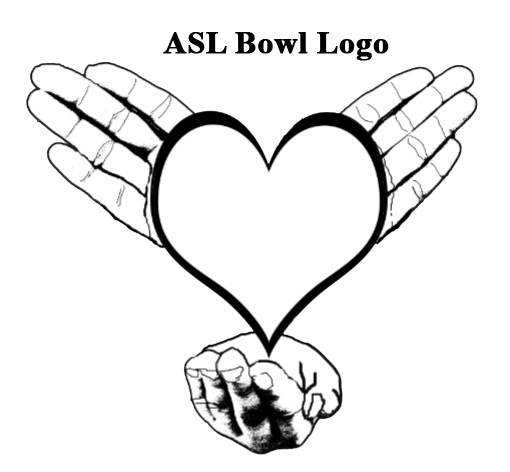ASL Bowl

ASL Bowl History
To read about GSPD ASL Bowl History, click on the following link:
GPSD ASL Bowl History
ASL Literature Explanations by Genre and Sub-Genre
SL Storytelling
Original Fiction: A short story with an opening and closing, a problem and solution, a clear lesson or moral,
and usually has three major events, a main character and other minor characters, and scenery.
Example:
Zander Symansky
“Football Technology” (6:30)
Zander Symansky
“Lost on an Island” (5:03)
Tanner Wedel
“Stuck on an Island” (8:21)
Narrative of Personal Experience: These stories are real-life accounts of various events, including those that are humorous or tragic and those of struggles to overcome various odds. Often these stories feature the oppression of Deaf people and how they succeed in the end…or not.
Example:
Jayman Washington
“The Journey of the Ape” (5:10)
Cinematographic Story: These stories involve cinematographic techniques that are film-like, such as close-ups, panning, zoom-in, zoom-out, medium shots, far shots, angled shots, slow and fast motion, and morphing of objects. Sometimes it is a way to retell or re-create scenes from movies.
Example:
Ethan Bettes
“Life, Past, Present, Future” (3:43)
Tiffany McCallum
“I Love You Island” (5:26)
Trenton Morse
“Journey of the Chip Bag” (5:57)
Folk Tale: According to Rutherford (1993), there are various types: legends, tall tales, and traditions. Bodies of work whose origin is lost but that have been shared in the community for a long time; whose origins may have begun as narratives of personal experience and subsequently have been passed around. Sometimes they involve real historical events with fictional characters, or real characters placed in a fictional time. Some stories are a copy of well-known stories with an interesting twist or with replacements.
Example:
Jamaika Jones
“Little Yellow Riding Hood” (4:04)
Aryzona Marsh
“Man VS Deaf Community” (4:45)
ASL Hand Shape Stories
A to Z: Interplay between the community’s two languages, ASL and English, where the storyteller manipulates the phonetic system of one language with the phonological system of the other. There are four general rules when creating a story with constraints in hand shape sequencing and sign selection:
- They must be in correct sequence (alphabetic sequence).
- They must be kept within the boundaries of allowable hand shape deviations.
- They must be clear use of paralinguistic and discourse mechanisms (shifting between characters, pausing, and use of space).
- The story itself must make sense.
Example:
Aryzona Marsh: A-Z+1-5
“Cowboy Duel” (2:34)
1 to 15: Interplay between the community’s two languages, ASL and English, where the storyteller manipulates the phonetic system of one language with the phonological system of the other. There are four general rules when creating a story with constraints in hand shape sequencing and sign selection:
- They must be in correct sequence (numerical sequence).
- They must be kept within the boundaries of allowable hand shape deviations.
- They must be clear use of paralinguistic and discourse mechanisms (shifting between characters, pausing, and use of space).
- The story itself must make sense.
Example:
Camerson Luttrell: 0-10-0
“Evolution of the TV” (1:22)
Hand Shape Set: Use a limited set of hand shape(s): one hand shape or a set of hand shapes (i.e.: 1, A, and 5). The story must follow 2 of 3 rules:
- The hand shapes used need to comply with the original intent.
- Deviation needs to be within acceptable limits.
- The story must make sense.
Example:
Armando Alvarez: 1, 5, ILY
“My Parents, My Hero” (2:43)
Brycen Laning: S, 5, 1
“My Chapter Ends” (3:00)
Jaeden Rolofson: S, 5, 1
“The Evolution of Hunting Technology” (2:28)
Orlando Cobos-Sosa: 5, 1
Moon “Chernobyl” (3:09)
Example:
Sethan Rolofson: AVENGERS
“Deaf Superhero in Infinity Wars Two” (1:38)
ASL Poetry
Space or Signing Cohesion: Visual poetic cohesion which manipulates space or signing, showing a visual-kinetic line:
- space or signing cohesion is a visual syntax of movement, design, and composition, creating an overall visual composition.
- cohesion can be linear, circular, dyadic, left-to-right, back-to-front, high-to-low, etc.
Example:
Jayda Aiken” Right/Left
“Foster Family” (1:19)
Joshua Brodie: Right/Left
“My Hero, My Parents” (1:19)
Jaeden Rolofson: Right/Left
“My Own Experience” (2:36)
Hand shape OR Rhythm Usage: Visual syntax of movement in
- sign pattern
- sign repetition (3-count/2-count/1-count rhythm
- sign manipulation (1-handed/2-handed)
- sign pace
- sign sequence
- sign production manipulation (shattered, icy, happy, frightened, etc.)
- palm orientation manipulation
Example:
Joshua Brodie: Repetition, 1, 5, S
“My Hero, My Parents” (1:19)
Renate Rose: Repetition
“North Star” (2:29)
Rachel Taylor: 1, 5
“Technology Transforms Deaf-Blind” (2:45)
Example:
Aryzona Marsh: Characters Writing Throughout History
“The Evolution of Writing” (2:23)
Raul Melgar: Personification of a Tree
“The Evolution of American Inventions” (2:54)
Raul Melgar: Personification of a Volcano “Hawaii” (3:33)
Raul Melgar: Repetition, Metaphor, Personification of Sunflower “Sunflower” (3:42)
Renate Rose: Symbolism
“North Star” (2:29)
Example:
Raul Melgar
“Hawaii” (3:33)
Sethan Rolofson
“Journey of the Dollar Bill” (4:03)
ASL Bowl Student Video Examples by Genre and Sub-Genre (25)
ASL Bowl Tutorial Video (2)

